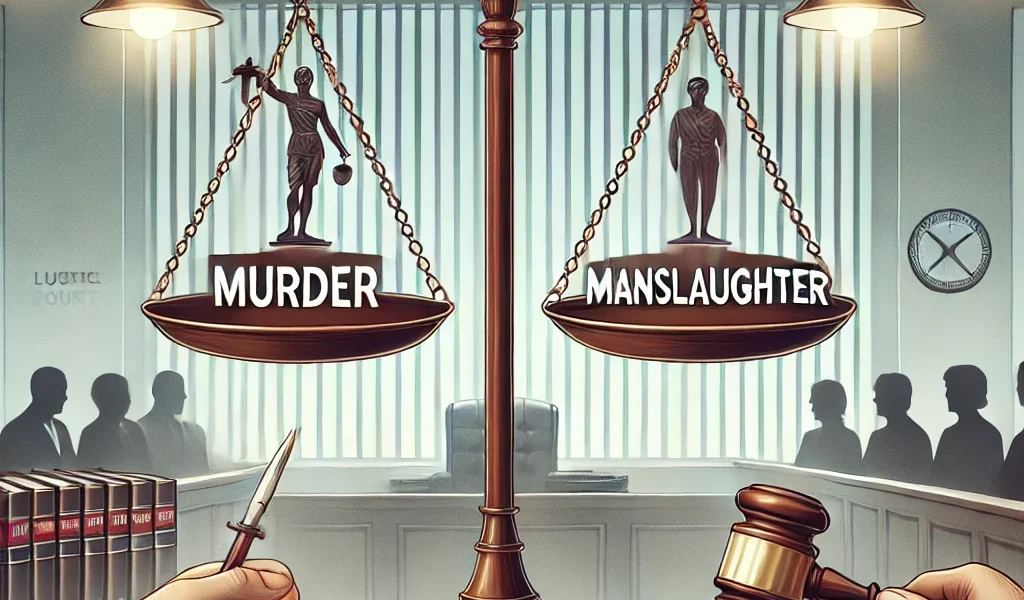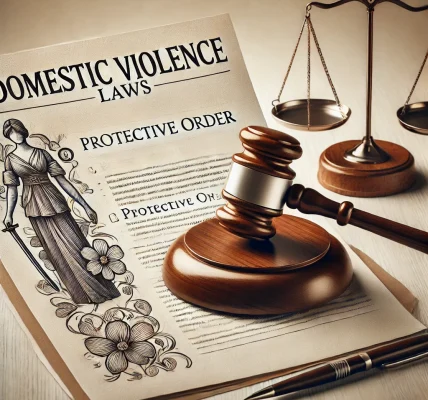When a person takes another person’s life, the legal system classifies the act into different categories based on intent, circumstances, and severity. The two primary classifications are murder and manslaughter. Understanding the distinctions between them is crucial, as they carry different legal consequences and punishments.
In this article, we will explore the legal definitions, key differences, and punishments associated with murder and manslaughter.
What is Murder?
Murder is the intentional and unlawful killing of another person. It is considered the most serious criminal offense and is typically divided into degrees based on intent and circumstances.
Types of Murder
1. First-Degree Murder
- Definition: A premeditated, intentional killing.
- Key Elements:
- The act was planned in advance.
- The perpetrator had the intent to kill.
- It may involve aggravating factors such as torture or killing a law enforcement officer.
- Example: A person stalking their victim for weeks and then executing a planned attack.
- Punishment: Life imprisonment or the death penalty (in some jurisdictions).
2. Second-Degree Murder
- Definition: An intentional killing that was not premeditated but still involved malice aforethought.
- Key Elements:
- The killing was intentional but not planned in advance.
- The perpetrator acted with a reckless disregard for human life.
- Example: A person gets into a heated argument and shoots someone in the heat of the moment.
- Punishment: Long-term imprisonment, often 15 years to life.
3. Felony Murder
- Definition: A murder that occurs during the commission of another felony, such as robbery or kidnapping.
- Key Elements:
- The perpetrator may not have intended to kill, but the death resulted from their felony act.
- Example: A bank robbery where a security guard is shot and killed.
- Punishment: Typically equivalent to first-degree murder.
What is Manslaughter?
Manslaughter is the unlawful killing of a person without malicious intent. Unlike murder, manslaughter involves situations where the defendant did not premeditate or intend to kill.
Types of Manslaughter
1. Voluntary Manslaughter
- Definition: A killing that occurs in the heat of the moment, without premeditation.
- Key Elements:
- The defendant was provoked.
- The reaction was immediate and emotional.
- Example: A person walks in on their spouse committing adultery and, in a blind rage, kills the other person.
- Punishment: Prison sentences ranging from 5 to 20 years.
2. Involuntary Manslaughter
- Definition: A killing that occurs due to reckless or negligent behavior without intent to kill.
- Key Elements:
- The defendant did not intend to harm but acted carelessly.
- The death was a result of negligence or criminal recklessness.
- Example: A drunk driver running a red light and killing a pedestrian.
- Punishment: Prison terms of 1 to 10 years, depending on severity.
3. Vehicular Manslaughter
- Definition: A subset of involuntary manslaughter that occurs when a person is killed due to negligent driving.
- Key Elements:
- The defendant was engaging in dangerous driving behavior.
- No intent to kill.
- Example: Texting while driving and causing a fatal accident.
- Punishment: Fines, probation, or several years in prison.
Key Differences Between Murder and Manslaughter
| Factor | Murder | Manslaughter |
|---|---|---|
| Intent | Intentional killing (with or without premeditation) | No intent to kill, but reckless actions led to death |
| Premeditation | Often planned (especially first-degree murder) | No premeditation (heat of the moment or accidental) |
| Malice | Involves malice aforethought | No malice; often involves provocation or negligence |
| Examples | Hiring a hitman, deliberate poisoning | Drunk driving accident, accidental shooting |
| Punishment | Life imprisonment, death penalty | 1–20 years imprisonment, depending on severity |
Legal Defenses for Murder and Manslaughter
Defendants in murder or manslaughter cases may use legal defenses to reduce or dismiss charges. Common defenses include:
1. Self-Defense
- If the killing was committed to prevent imminent harm, self-defense may be a valid argument.
- Example: A person shoots an armed intruder breaking into their home.
2. Lack of Intent
- In second-degree murder cases, proving the absence of intent can reduce charges to manslaughter.
- Example: An accidental shooting during a struggle.
3. Insanity Defense
- If the defendant was mentally incapacitated at the time of the crime, they may not be held fully responsible.
4. Accidental Death
- If the death was truly accidental, without negligence, charges may be dismissed.
- Example: A person slips and falls off a balcony during an argument.
Conclusion
Understanding the legal distinctions between murder and manslaughter is essential, as they carry vastly different legal consequences. While both involve the loss of life, the intent, circumstances, and level of negligence play a crucial role in determining the severity of the crime and the corresponding punishment




